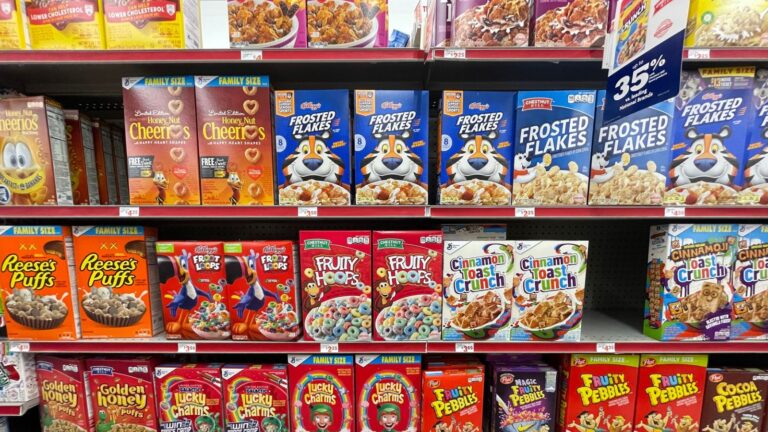10 Popular American Snacks That Confuse The Rest of The World
Every country has its go-to snacks, but some of the ones Americans love leave people from other parts of the world scratching their heads. From sweet-salty mashups to ultra-processed cheese in a can, these snacks are a regular part of life in the U.S.—but they’re often met with confusion (or curiosity) elsewhere. Here are a few popular picks that tend to baffle non-Americans.
Cheese in a Can
Spraying cheese out of a pressurized can is second nature to many Americans, but it’s definitely not a global norm. Outside the U.S., cheese is usually fresh, aged, or sliced—rarely aerosolized. While it’s convenient and fun to use, the texture and flavor of canned cheese leave many international visitors wondering how this became a pantry staple.
Flamin’ Hot Everything
From chips to popcorn to even pickles, Flamin’ Hot versions of snacks are everywhere in the U.S. The intense heat and neon red color can be a shock to the system if you’re not used to spicy snacks. Other countries enjoy heat too, but the fiery obsession—and bright red fingers that come with it—don’t always make sense to people unfamiliar with the trend.
Pop-Tarts
These toaster pastries are a childhood favorite in the U.S., but they often confuse people from other countries. Are they breakfast? Are they dessert? Are you supposed to toast them or eat them straight from the foil? The answer is… yes. Their long shelf life and sugary filling are often more baffling than appealing to non-Americans.
Grape-Flavored Anything
Artificial grape flavoring is huge in American snacks—especially candy, soda, and popsicles. But for many people outside the U.S., it tastes nothing like real grapes and comes off as oddly sweet or even medicinal. The bold purple color doesn’t help either. It’s definitely one of those flavors that Americans grow up with—but others just don’t get.
Beef Jerky
To many Americans, jerky is a protein-packed, road trip essential. But to others, it’s dried meat in a bag, and that can be a hard sell. The chewy texture and salty flavor are an acquired taste if you didn’t grow up eating it. For people used to fresh or cured meats, it’s not always clear why jerky is such a big deal.
Peanut Butter and Jelly Sandwiches
In the U.S., PB&J is practically its own food group. It’s simple, affordable, and a staple in lunchboxes everywhere. But outside the States, combining sweet jelly with rich peanut butter is not a common pairing. Some folks are totally thrown off by the mix of textures and flavors—and can’t believe how popular it is.
Kool-Aid Powder
A packet of brightly colored powder that you mix with water and a mountain of sugar? That’s Kool-Aid. For many non-Americans, it’s confusing both in concept and flavor. It’s more of a nostalgic throwback than a drink staple these days, but the idea of making your own fruit-flavored sugar water still turns heads internationally.
Corn Dogs
Hot dogs on sticks, dipped in sweet cornmeal batter, then deep-fried? That’s peak fair food in the U.S., but to people elsewhere, it sounds a bit odd. The mix of sweet and savory, along with the carnival-style presentation, makes corn dogs one of those snacks that’s hard to explain if you haven’t grown up with them.
Jell-O
Jiggly, brightly colored, and often layered into desserts, Jell-O is a nostalgic treat for many Americans. But for people unfamiliar with gelatin-based snacks, the texture is often the biggest barrier. Some countries use gelatin for savory dishes or aspics, so seeing it as a dessert—especially in neon green—is definitely a head-tilter.
Sweet and Salty Popcorn
Americans love popcorn in all forms, but sweet-and-salty varieties—especially ones coated in caramel, cheese, or both—can be confusing to international visitors. In some countries, popcorn is strictly a savory snack. Mixing in sugar or unusual flavors tends to get a mixed reaction from those expecting something more traditional.
Some Things Are Just Uniquely American
While other countries may find these snacks strange, that’s part of what makes them so fun. Food isn’t just about taste—it’s about culture, nostalgia, and growing up with certain flavors. What seems weird to one person may be comfort food to another. And sometimes, the oddest snacks end up being the most memorable.
This article first appeared on Happy From Home.







